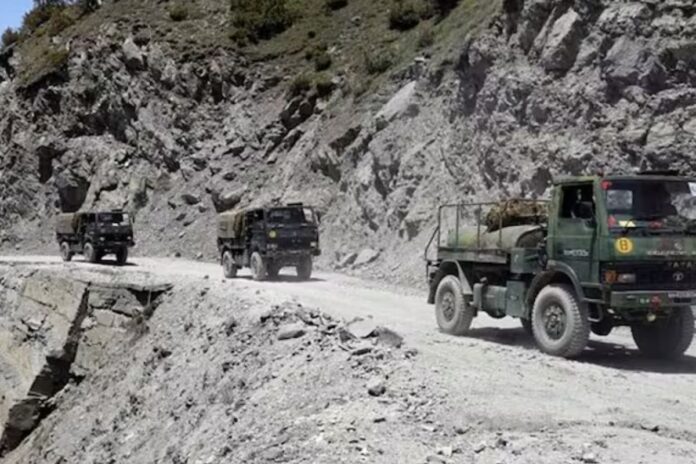Defence infrastructure projects in Ladakh have received a significant boost as the National Board for Wildlife (NBWL) approved 11 initiatives aimed at enhancing India’s military preparedness along the Line of Actual Control (LAC). These projects, spanning key protected areas, include the construction of telecom networks, ammunition storage facilities, and battalion camps to fortify border readiness against potential threats from China.
Post-Galwan Era: A Strategic Military Overhaul
The 2020 Galwan Valley clash marked a critical turning point in India’s defence strategy, highlighting the urgent need for modernised infrastructure in Ladakh. The violent standoff underscored the challenges of troop mobility, communication, and ammunition readiness in a high-altitude, volatile region.
The newly approved defence infrastructure projects focus on addressing these gaps through the construction of:
- Infantry battalion camps and artillery regiment posts.
- Mobile telecom towers under the Army Signals Corps for improved communication.
- Formation ammunition storage facilities (FASF) for better logistical readiness.
- Traffic control posts and a boat shed area for operational support.
- A waste disposal and processing plant in Hanle village to mitigate environmental impact.
These developments are strategically located within Ladakh’s Changthang High Altitude Cold Desert Wildlife Sanctuary and the Karakoram-Nubra-Shyok Wildlife Sanctuary. Both regions are crucial for maintaining India’s military presence while preserving ecological balance.
Enhancing Border Infrastructure
Improved connectivity through telecom towers and enhanced operational coordination are key components of these projects. The establishment of ammunition storage facilities will provide immediate access to critical supplies, ensuring readiness for any escalation along the LAC.
By focusing on infrastructure in Ladakh, India is not only addressing immediate military needs but also laying the groundwork for long-term security. This shift signifies a broader strategic vision to counter emerging threats in a challenging geopolitical environment.
Conservation Meets National Security
The NBWL has imposed strict conditions to minimise the environmental impact of these projects. Measures include safeguarding the habitats of snow leopards, Tibetan antelopes, and migratory birds. The Defence Ministry has committed to adhering to waste management protocols and habitat preservation, balancing military advancement with ecological responsibility.
The Role Of Defence Infrastructure In Ladakh
Ladakh’s challenging terrain and extreme weather conditions require cutting-edge infrastructure to support military operations. By prioritising defence infrastructure projects, India is modernising supply chains, communication networks, and troop deployment capabilities. These initiatives ensure that the Army remains agile, well-equipped, and prepared to handle any potential crisis along the border.
Strategic Importance Of Ladakh
Ladakh’s proximity to the LAC and its status as a high-altitude conflict zone make it a focal point of India’s defence strategy. The region’s unique ecosystem and harsh climate pose challenges that demand innovative solutions. These projects demonstrate India’s resolve to maintain a strong military presence while protecting the region’s biodiversity.
India’s approval of these projects reflects a commitment to strengthening its defence capabilities while respecting environmental imperatives. With this strategic enhancement, Ladakh’s borders will not only be more secure but also equipped to handle future challenges with resilience and readiness.

